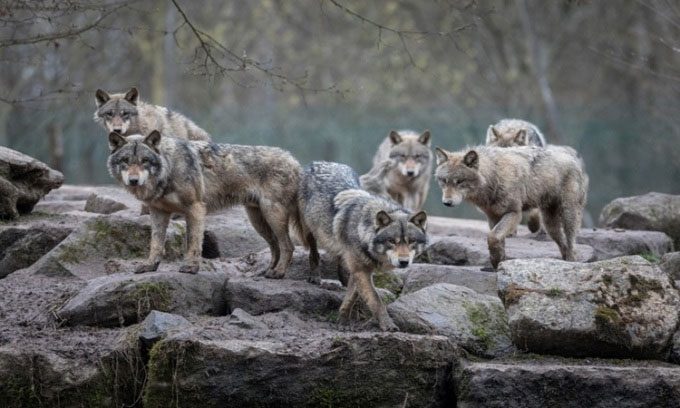The plan to reintroduce wolves in Colorado faces mixed opinions from experts and residents.
The state of Colorado is set to embark on a controversial experiment next month. State authorities will release 10 gray wolves in accordance with a law enacted in 2020. Wolves have long been a contentious animal, particularly in rural areas where many farmers and ranchers view them as an unacceptable risk to both humans and livestock. However, for many Americans, they evoke a strong connection and significance to the natural world, according to USA Today.

Gray wolves will be released into the wild in Colorado. (Photo: Post Independent).
The voters in Colorado are largely opposed to the reintroduction of wolves. Most supporters of the law are urban residents living far from where the wolves are to be released. Colorado plans to release dozens of wolves captured from the state of Oregon over time. The state government hopes to establish a self-sustaining wolf population totaling between 150 and 200 wolves.
While many states in the U.S. have healthy wolf populations, Colorado has very few wolves after the species was nearly eradicated nationwide in the 1940s. Due to their near extinction, wolves were the first animals protected under the Endangered Species Act of 1973, requiring the federal government to find ways to recover them.
Supporters of Colorado’s reintroduction plan argue that wolves are a natural and important part of the ecosystem in the West, and that humans have no right to eliminate them. They claim that safety concerns are exaggerated and that ranchers and farmers will be compensated through tax revenue. However, opponents view wolves as a dangerous threat to both wildlife and livestock. An adult wolf can kill and eat up to 20 elk each year. Ranchers argue that they will need to spend more money to protect their cattle and sheep, reducing their already limited income.
Colorado must obtain a special permit from the federal government to establish a new wolf management program. The current wild wolves in the state likely migrated from Wyoming. After reaching out to several other states, the Colorado government successfully persuaded Oregon to allow them to trap and transport 10 wolves this year. The wolves chosen for transport are between 1 and 5 years old, including both males and females. They will be transported by truck or air in sturdy aluminum crates, fitted with GPS tracking collars before being released. Colorado plans to release up to 50 wolves captured from Oregon.
The exact release locations for the wolves remain confidential, but they will be living on private or public land in rural central Colorado. Authorities are considering nearby population density, attitudes towards wolves, and access to prey such as elk while also ensuring the release sites are far from the borders of Utah, Wyoming, and New Mexico.





















































